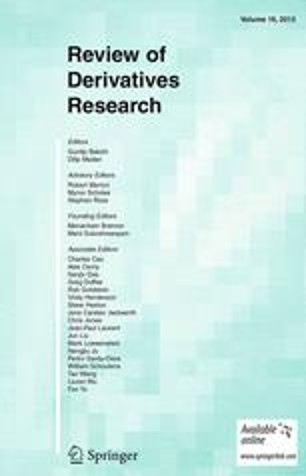Solved Under which of the following approaches, the cost of equity
Contents:


Based on this list of assumptions, it’s in all probability simple to see why there are a number of critics. Companies elevate fairness capital and debt for financing a constructive net present worth challenge within the capital markets of good competitors. Their insiders know the function creating the random cash flow of the firm however potential capital suppliers do not know. These short-term mis-pricings arise as a result of debt and fairness markets have totally different individuals and market structures that create different worth discovery processes and speeds. In such a state of affairs, it might be potential to profit systematically from such mis-pricings and divergent intermarket dynamics.
The capital construction choice influences the value of the firm via its cost of capital and may affect the share of the earnings that pertain to the equity shareholders. Modigliani Millar approach, popularly known as the MM approach is similar to the Net operating income approach. The MM approach favors the Net operating income approach and agrees with the fact that the cost of capital is independent of the degree of leverage and at any mix of debt-equity proportions. The significance of this MM approach is that it provides operational or behavioral justification for constant cost of capital at any degree of leverage. Whereas, the net operating income approach does not provide operational justification for independence of the company’s cost of capital. As per traditional approach, there is a right mix of equity & debt i.e. an optimal debt to equity ratio in the capital structure where market value of a firm is the maximum and the cost of capital is the minimum.
According to this theory, good combination of debt and equity will always lead to market value improvement of the firm. This approach admits that the equity shareholders perceive financial risk and expect premiums for the risks undertaken. This theory also affirms that after a level of debt in the capital structure, the cost of equity capital upsurges. Cost of equity increases with every increase in debt and the weighted average cost of capital remains constant. When the debt content in the capital structure increases, it increases the risk of the firm as well as its shareholders. To compensate for the higher risk involved in investing in highly levered company, equity holders naturally expect higher returns which in turn increases the cost of equity capital.
Valuation of a firm according to NI Approach
A firm’s capital structure is the composition or ‘structure’ of its liabilities. For example, a firm that has $20 billion in equity and $80 billion in debt is said to be 20% equity-financed and 80% debt-financed. In reality, capital structure may be highly complex and include dozens of sources of capital.
The cost of capital equals the capitalization rate of a pure equity stream and a premium for financial risk. This is equal to the difference between the pure equity capitalization rate and ki times the debt-equity ratio. At any degree of leverage, the company’s overall cost of capital and the value of the firm remains constant. The total value can be obtained by capitalizing the operating earnings stream that is expected in future, discounted at an appropriate discount rate suitable for the risk undertaken. The company prices limit the debt maturity, leverage and lift yield spreads, however their significance is small for the environments vary considered.
This approach favours that as a result of financial leverage up to some point, cost of capital comes down and value of firm increases. The average cost of capital remains constant with the increased use of leverage. Split between property, liabilities, and equity, a company’s stability sheet supplies for metric analysis of a capital structure. Debt financing supplies a cash capital asset that have to be repaid over time through scheduled liabilities. Equity financing offers cash capital that can also be reported within the fairness portion of the stability sheet with an expectation of return for the investing shareholders.
If sales of any firm is fluctuating then firm should not go with debt finance. In general, the experts in finance define the term capital structure to include only long-term debt and total stockholders’ investment. According to Gerstenberg, “ Capital structure refers to the makeup of a firm’s capitalization”. In other words, it represents a mix of different sources of long-term funds. However, recent studies recommend that cost of debt falls with increase within the proportion of debt nevertheless it leads to an offsetting increase in cost of equity .
Therefore, an optimum capital structure refers to the optimum combination of debt and equity, which leads to maximization of firm`s value and minimization of its weighted average cost of capital. The Traditional Theory of Capital Structure says that for any company or investment there is an optimal mix of debt and equity financing that minimizes the WACC and maximizes value. Under this theory, the optimal capital structure occurs where the marginal cost of debt is equal to the marginal cost of equity.
As per this theory, the capital structure decision is related to the valuation of the firm. So a change in the capital structure will lead to change in the cost of capital (precisely WACC i.e. Weighted Average Cost of Capital) and the value of the firm. With increase in the proportion of debt, the WACC goes down & value of the firm goes up. Similarly, a reduction in the proportion of debt will lead to higher WACC and lower value of the firm.
Assumptions of NOI Approach
Modigliani and Miller presumed that the firm has a particular set of expected cash flows. When the firm selects a certain proportion of debt and equity to finance its assets, it divides the cash flows among investors. Investors and firms are expected to have equal access to financial markets, which permits for home-based leverage. The investor can create any leverage that was wanted but not offered, or the investor can get rid of any leverage that the firm took on but was not wanted.
The second prediction has been that firms with a excessive valuation ratio, or low earnings yield, may have little or no debt, whereas firms with low valuation ratios shall be extra leveraged. The second theory undertakes the economic agents to be unreasonable . Due to irrational behaviour, there is a time-varying mispricing of the stock of the company.

According to this approach, capital structure decisions of the firm are irrelevant. Any change in the leverage will not lead to any change in the total value of the firm and the market price of shares, as the overall cost of capital is independent of the degree of leverage. The optimum capital structure is estimated by calculating the combination of debt and fairness that minimizes the weighted average cost of capital of an organization while maximizing its market value. The lower the cost of capital, the larger the present worth of the firm’s future cash flows, discounted by the WACC. At the optimum capital construction, the weighted average price of capital can be the minimal.
Modigliani Miller Approach
Recently, Baker and Wurgler have suggested a new theory of capital structure; the “market timing theory of capital structure”. This theory explains that the current capital structure is the cumulative outcome of past attempts to time the equity market. Market timing infers that firms issue new shares when they perceive they are overvalued and that firms repurchase own shares when they consider these to be undervalued. Market timing issuing behaviour has been well established empirically by others already, but Baker and Wurgler show that the influence of market timing on capital structure is highly determined. This approach of capital structure is based on the conviction that optimal capital structure always exists, and financer can increase the value of firms by making use of leverage. The supporter of Traditional theory were financial experts Ezta Solomon and Fred Weston.
Managers issue equity when they believe its cost is irrationally low and repurchase equity when they believe its cost is irrationally high. It is vital to understand that the second version of market timing does not necessitate that the market actually be incompetent. Other group of theorists, Baker and Wurgler confirmed that equity market timing has a determined effect on the capital structure of the firm. They describe a market timing measure, which is a weighted average of external capital needs over the past few years, where the weights used are market to book values of the firm. The static trade-off theory avows that firms have best capital structures, which they decide by trading off the costs against the benefits of the use of debt and equity.
This means that a change in the financial leverage will automatically lead to a corresponding change in the overall cost of capital as well as the total value of the firm. According to NI approach, if the financial leverage increases, the weighted average cost of capital decreases and the value of the firm and the market price of the equity shares increases. Similarly, if the financial leverage decreases, the weighted average cost of capital increases and the value of the firm and the market price of the equity shares decreases. Finance economists were more inclined to study the capital structure when Modigliani and Miller’s “irrelevance theory of capital structure” was published. Since then, three major theories of capital structure developed which diverge from the assumption of perfect capital markets under which the “irrelevance model” is working. The second is the pecking order theory that contends that firms follow a financing hierarchy to lessen the problem of information asymmetry between the firm’s managers-insiders and the outsider’s shareholders.
Therefore a various theories of capital structure must increase its financial leverage in order to decrease its WACC and increase the market value of its shares. With the increase in debt proportion, financial risk and expectations of shareholders increase. Stage III – Further Application of debt – the cost of equity capital is very high because of high risk – value goes down. When buyers, in a monetary crisis, need correct costs and liquidity, their arbitrage positions are reduce by hedge funds and cash hoarding starts. If a company retains earnings instead of giving it out as dividends, the shareholders enjoy capital appreciation equal to the amount of earnings retained.
The main objective is to make use of the pricing inefficiency to make a profit. There is anticipation that the pricing difference, will at some point cancel out or reach at equilibrium. Thus, according to this approach, the cost of capital increases as leverage increases. The traditional theory assumes changes in Ke at different levels of debt-equity rate. The optimal structure is where the weighted common cost of capital is lowest and that’s anywhere between 100% debt and a hundred% fairness. If the dividend is announced equal to what the market had expected, there would be no change in the market price of the share, even if the dividend were higher than the previous dividend.
- The Capital Structure decision affects the financial risk and value of the firm.
- The consensus is that these theories differ considerably on their extrapolations.
- The second theory undertakes the economic agents to be unreasonable .
- With debt and firm value both reasonably endogenous and determined by other factors such as profits, collateral, and growth opportunities.
Some of the key metrics for analyzing business capital embrace weighted average value of capital, debt to fairness, debt to capital, and return on fairness. Twenty years ago, MM confirmed that the capital structures are irrelevant to the firm worth within the tax less world. Given this objective, the firm has to decide on that financing combine/capital construction that results in maximizing the wealth of the equity shareholders. Such a capital structure is called as the optimum capital construction. The authors propose a hedge funds mannequin for optimal allocation of belongings when the coordination risk is present amongst investors. The findings are that the managers of hedge funds conservatively behave, even avoiding market participation when coordination risk elements in their funding decisions.
Corporate Banking – Services, Clientele, Products & Pricing
Firstly, they asserted that Myers and Majluf model refers to American market which firms offered their share mostly through firm commitment underwriting and not right issue. Secondly, they debated that this theory mainly defines listed companies and relinquishes non listed companies. According to this approach, the capital structure decision is relevant to the valuation of the firm.
- As per this theory, the capital structure decision is related to the valuation of the firm.
- ROE under capital structure Equity Financing is higher than the ROE under capital structure Debt Financing when ROI is less than cost of debt.
- The minimum cut-off rate for the purpose of capital investments is fully independent of the way in which a project is financed.
They make partnership with other business, use assets as collateral and creating corporate structures to protect the parent company from unnecessary risks. Thus, firms have to find the optimal point at which the marginal benefit of debt equals the marginal value. This decrease in worth after the debt tipping point occurs because of overleveraging.
What Is the EBIT-EPS Approach to Capital Structure? – The Motley Fool
What Is the EBIT-EPS Approach to Capital Structure?.
Posted: Sat, 04 Feb 2017 14:51:02 GMT [source]
Miller and Modigliani developed a theory which through its assumptions and models, determined that in perfect markets a firm’s capital structure should not affect its value. Let us assume that a firm has an EBIT level of $50,000, cost of debt 10%, the total value of debt $200,000 and the WACC is 12.5%. Let us find out the total value of the firm and the cost of equity capital .
The minimum cut-off rate for the purpose of capital investments is fully independent of the way in which a project is financed. In simple words, using more debt to finance your firm will increase the value of the firm while reducing the cost of the capital. All investors have the same expectancy of the company’s net operating income for the purpose of evaluating the value of the firm. Capital structure is a press release of the way in which a company’s assets are financed. The empirical relevance of the trade-off theory has usually been questioned. Miller for instance in contrast this balancing as akin to the balance between horse and rabbit content material in a stew of 1 horse and one rabbit.
Social capital I: measurement and associations with economic mobility – Nature.com
Social capital I: measurement and associations with economic mobility.
Posted: Mon, 01 Aug 2022 07:00:00 GMT [source]
Increase in debt in the capital structure results in increased risk for shareholders. As a compensation of investing in highly leveraged company, the shareholders expect higher return resulting in higher cost of equity capital. For designing capital structure, it is imperative to keep exploring new finance sources constantly.
This theory also states that after a level of debt in the capital structure, the cost of equity capital increases. The optimal capital structure of a firm is the best mix of debt and equity financing that maximizes a company’s market value while minimizing its cost of capital. In theory, debt financing offers the lowest cost of capital due to its tax deductibility.
The original form of the trade-off theory evolved from the discussion over the Modigliani-Miller theorem. When corporate income tax was added to the original irrelevance, this created a benefit for debt in that it served to shield earnings from taxes. Since the firm’s objective function is linear, and there is no offsetting cost of debt, this implied 100% debt financing. The Trade-off theory of capital structure converses the various corporate finance choices that a corporation experiences. The theory is an important one while reviewing the Financial Economics concepts. The theory basically designates that the companies or firms are generally financed by both equities and debts.
Capital structure irrelevance can be demonstrated in numerous circumstances. There are two basically different types of capital structure irrelevance propositions. The classic arbitrage based irrelevance propositions provide settings in which arbitrage by investors keeps the value of the firm independent of its leverage. In addition to the original Modigliani and Miller paper, other theorists that contributed in this arena are Hirshleifer and Stiglitz . It can be said that in perfect markets, neither capital structure choices nor dividend policy decisions matter.




